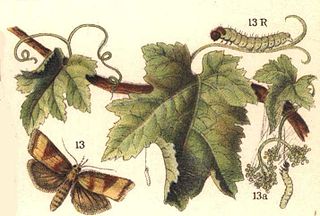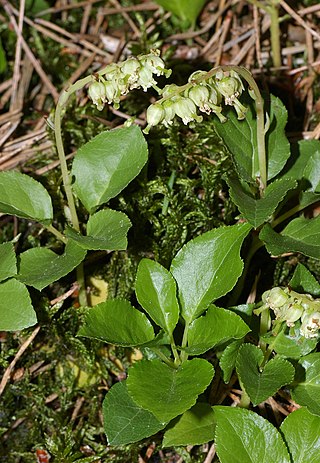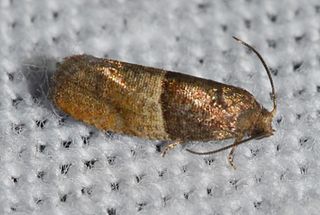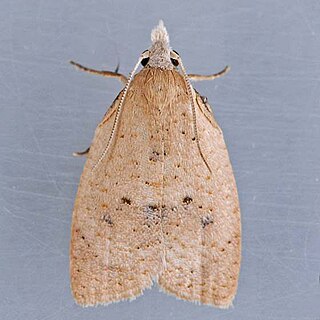Related Research Articles

Secunda is a town built amidst the coalfields of the Mpumalanga province of South Africa. It was named for being the second Sasol extraction refinery producing oil from coal, after Sasolburg, some 140 kilometres (87 mi) to the west.
In botany, an infraspecific name is the scientific name for any taxon below the rank of species, i.e. an infraspecific taxon or infraspecies. A "taxon", plural "taxa", is a group of organisms to be given a particular name. The scientific names of botanical taxa are regulated by the International Code of Nomenclature for algae, fungi, and plants (ICN). This specifies a three part name for infraspecific taxa, plus a connecting term to indicate the rank of the name. An example of such a name is Astrophytum myriostigma subvar. glabrum, the name of a subvariety of the species Astrophytum myriostigma.

The Sparganothini are a tribe of tortrix moths.

The Archipini are a tribe of tortrix moths. Since many genera of these are not yet assigned to tribes, the genus list presented here is provisional.

Chlidanotinae is a subfamily of moths in the family Tortricidae.

The Cochylini are a tribe of tortrix moths. It used to be classified as the subfamily Cochylinae.

Orthilia is a genus of flowering plants in the family Ericaceae. It has only one species, Orthilia secunda. Its common names are sidebells wintergreen, one-sided-wintergreen and serrated-wintergreen. It is also called one-sided pyrola, one-sided shinleaf, and one-sided wintergreen. It was previously part of genus Pyrola, the wintergreens.

Poa secunda is a widespread species of perennial bunchgrass native to North and South America. It is highly resistant to drought conditions, and provides excellent fodder; and has also been used in controlling soil erosion, and as revegetator, often after forest fires. Cultivars include 'Canbar', 'Service', 'Sherman', and 'Supernova'. Historically, indigenous Americans, such as the Gosiute of Utah, have used P. secunda for food. It was originally described botanically in 1830 by Jan Svatopluk Presl, from a holotype collected from Chile by Thaddäus Haenke in 1790.

Larisa is a genus of moths belonging to the subfamily Olethreutinae of the family Tortricidae. It contains only one species, Larisa subsolana, which is found in North America, where it has been recorded from Alabama, Florida, Georgia, Illinois, Indiana, Kentucky, Maine, Maryland, Massachusetts, Minnesota, Mississippi, Missouri, New York, Ohio, Oklahoma, Ontario, Quebec, South Carolina, Tennessee, Texas, Virginia, and West Virginia.

Orthotaenia is a genus of moths belonging to the subfamily Olethreutinae of the family Tortricidae.

Sparganothoides is a genus of moths belonging to the subfamily Tortricinae of the family Tortricidae.
Galomecalpa is a genus of moths belonging to the family Tortricidae.
Marylinka is a genus of moths belonging to the family Tortricidae.
Theorica is a genus of moths belonging to the family Tortricidae.

The Euliini are a tribe of tortrix moths.

Acleris ferrugana is a species of moth of the family Tortricidae. It is found in China, most of Europe and has also been recorded from North America.
Alexey Nikolaievich Diakonoff, also transliterated as Alexej Nikolajewitsch Diakonoff, was a Russian–Dutch entomologist who specialised in Microlepidoptera.
Galomecalpa secunda is a species of moth of the family Tortricidae. It is found in Ecuador and Peru.
Marylinka mimera is a species of moth of the family Tortricidae. It is found in Paraná, Brazil.

Phalonidia aetheria is a species of moth of the family Tortricidae, the subfamily Tortricinae, and the tribe Cochylini. It is found in Brazil, in the states of São Paulo, Santa Catarina and Goias.
References
- ↑ tortricidae.com
- ↑ Józef Razowski & Vitor O. Becker, 2007, Acta Zoologica Cracoviensia50B (2): 91-128